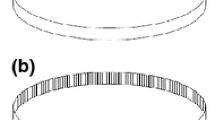Abstract
If Whitehead is right, science teachers who try to increase student interest by making the science they teach more “pure” and by “covering more material” are going about their work in just the wrong way. Science, for purposes of precision in measurement, translates the dynamic world of feeling and force, of “causal efficacy” (for example, the San Francisco earthquake), into a static representation spatialized and given “presentational immediacy” (for example, the Richter scale). But notice that the Richter scale isn't very interesting (even as abstract art) apart from its connection, via “symbolic reference,” to the earthquake. Such reference is essential to give both a sense of reality and a feeling of interes to the subject, but it makes the science less “pure,” and it takes more time to “cover the material.” An example of teaching “pure” and “impure” formal logic is given as a case study.
Similar content being viewed by others
References
Allan, G. (1973).A Whiteheadian approach to the philosophy of history. Unpublished dissertation, Yale University.
Brumbaugh, R. S. (1966) Whitehead's educational theory: Two supplementary notes toThe Aims of Education.Educational Theory,16, 210–215.
Brumbaugh, R. S. (1982).Whitehead, process philosophy, and education. Albany: State University of New York Press.
Griffin, D. (Ed.). (1986).Physics and the ultimate significance of time. Albany: State University of New York Press.
Hendley, B. (1986).Dewey, Russell, and Whitehead: Philosophers as educators. Carbondale, IL: Southern Illinois University Press.
Lawrence, N. M. (1962). The rhythm of nature. In R. S. Brumbaugh & N. M. LawrencePhilosophers on Education. Boston: Houghton Mifflin.
Lawrence, N. M. (1965). Nature and the educable self in Whitehead.Educational Theory,15, 205–216.
Penrose, R. (1989).The emperor's new mind. Oxford: Oxford University Press.
Takeuchi, M. (1989). Beauty as educative process. InProcess papers [Association for Process Philosophy of Education series]. Belle Mead, NJ: Association for Process Philosophy of Education.
Whitehead, A. N. (1917).The organization of thought. London: Williams & Norgate.
Whitehead, A. N. (1926).Science and the modern world (2nd ed.). New York: Macmillan.
Whitehead, A. N. (1927).Symbolism. New York: Macmillan.
Whitehead, A. N. (1929).The aims of education, New York: Macmillan.
Whitehead, A. N. (1953).Introduction to mathematics. London: Oxford University Press (Home University Library).
Whitehead, A. N. (1958a).The function of reason. Boston: Beacon Press.
Whitehead, A. N. (1958b).Modes of thought. New York: Macmillan.
Whitehead, A. N. (1978).Process and reality (corrected ed., D. Griffin & D. W. Sherburne, Eds.). New York: The Free Press.
Author information
Authors and Affiliations
Rights and permissions
About this article
Cite this article
Brumbaugh, R.S. Whitehead and a new look at teaching elementary science. Interchange 23, 245–254 (1992). https://doi.org/10.1007/BF01450185
Issue Date:
DOI: https://doi.org/10.1007/BF01450185




